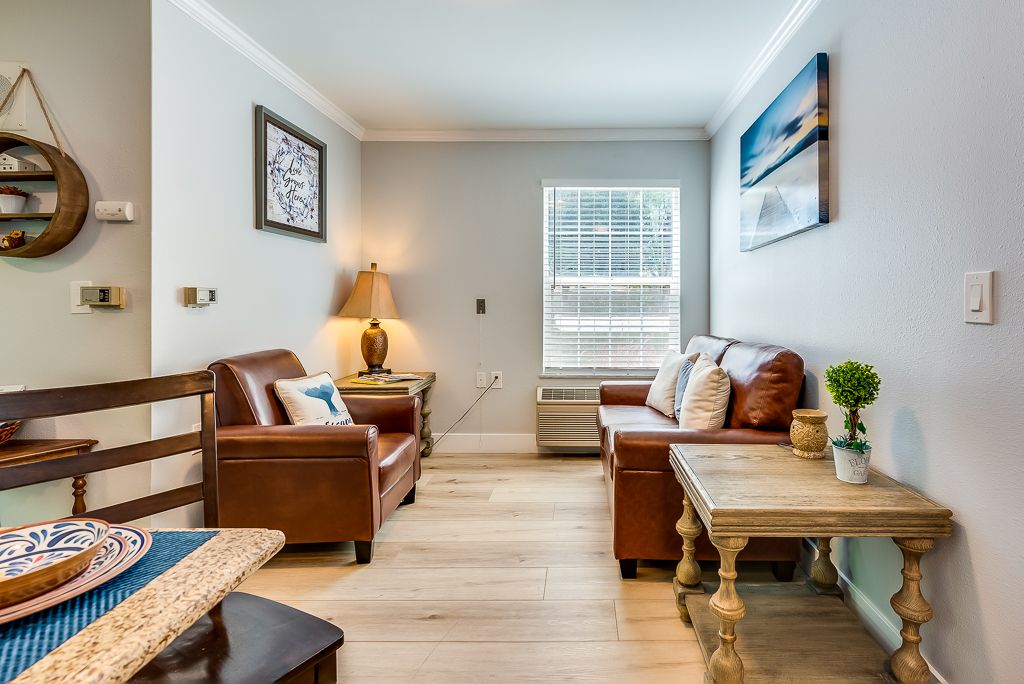All Concerning Memory Treatment Providers: Why Tiny Memory Treatment Houses Are a Fantastic Choice
Memory care services play a vital function in supporting individuals with Alzheimer's and dementia. Small memory care homes stand out for their individualized method and intimate setting. With reduced staff-to-resident ratios, these homes foster more powerful links and customized treatment. Citizens take advantage of enhanced social communications and a safe setting. As households explore alternatives, understanding the special advantages of tiny memory treatment homes ends up being crucial. What variables should be taken into consideration when selecting the appropriate home?
Understanding Memory Care Provider
While several might be familiar with basic senior treatment alternatives, comprehending memory care services is crucial for family members facing the challenges of cognitive decline. Memory care particularly accommodates individuals with problems such as Alzheimer's disease and other kinds of dementia. These services give an organized environment that concentrates on improving the lifestyle for residents via specialized treatment and support.Memory care facilities are developed to guarantee safety and security and security, typically featuring protected environments to stop straying. Educated employee are available around the clock to assist with everyday activities, medication monitoring, and personal care. Furthermore, memory care programs typically consist of cognitive stimulation tasks, tailored to engage locals and promote mental health. Families can profit from recognizing these solutions, as they allow informed choices concerning their loved ones' treatment, guaranteeing that their specific needs and preferences are attended to in a compassionate and helpful way.
The Advantages of Small Memory Treatment Houses
Little memory care homes use unique benefits that can significantly boost the lifestyle for locals with cognitive disabilities. One considerable advantage is the intimate atmosphere, which enables for customized interactions among personnel and homeowners. This smaller sized setting cultivates meaningful relationships, lowering feelings of isolation and anxiousness commonly experienced by people with memory issues.Additionally, the reduced staff-to-resident ratio in little memory treatment homes makes it possible for caregivers to offer more mindful supervision and support. This method not only improves safety and security but also advertises a complacency for the residents.Moreover, tiny memory care homes can adjust quickly to the one-of-a-kind requirements and choices of each local, enabling for a more homey ambience. Such an atmosphere can urge social involvement and engagement in tasks, ultimately improving the everyday experiences of those dealing with cognitive impairments.
Personalized Care Plans for Homeowners
Personalized care plans are crucial in memory treatment homes, as they satisfy the unique demands and choices of each local. These strategies begin with detailed analyses conducted by proficient specialists, who review cognitive capacities, clinical background, and personal interests. This customized approach assurances that care is not just efficient yet also respectful of each individual's dignity and autonomy.Moreover, personalized care strategies are flexible, permitting modifications as homeowners' needs develop gradually. This adaptability promotes a complacency and experience, which is important for people living with memory difficulties. Caregivers are educated to carry out these strategies continually, supplying assistance that aligns with the homeowners' regimens and preferences.Ultimately, personalized treatment plans enhance the lifestyle for citizens by promoting involvement, independence, and well-being, making them a fundamental aspect of memory care solutions in tiny memory treatment homes.
Producing a Home-Like Atmosphere
Developing a home-like atmosphere is vital for promoting convenience and knowledge in memory care settings, as it greatly influences citizens' emotional health. Tiny memory treatment homes often focus on tailored touches, such as cozy color combinations, household photos, and acquainted furniture setups, which aid homeowners really feel a lot more secure. Incorporating elements evocative a conventional home, like comfy living rooms and common locations, motivates a sense of belonging.Moreover, making use of all-natural light and exterior rooms can enhance the environment, advertising leisure and serenity. Employee play a considerable duty in maintaining this setting by involving with citizens in a compassionate fashion, treating them like family. Routine tasks, such as food preparation or gardening, can also add to a home-like feeling, supplying chances for citizens to take part in purposeful experiences. On the whole, producing a supporting setting supports cognitive function and emotional stability, making it a crucial aspect of memory care services.
Enhanced Social Communication and Area
Boosted social communication and area are essential components of memory care solutions. By cultivating personalized social engagement and developing a family-like atmosphere, these services promote meaningful links amongst homeowners. Team tasks and events further motivate engagement, helping individuals feel more included and sustained.
Personalized Social Engagement
While social communication is important for total well-being, lots of people with memory impairments commonly battle to engage meaningfully with others. Individualized social involvement in memory treatment homes addresses this obstacle by developing customized activities that deal with homeowners' one-of-a-kind interests and capabilities. By concentrating on individual choices, caretakers can promote connections that reverberate deeply with each person. Tasks such as art therapy, songs sessions, and directed conversations promote cognitive stimulation and psychological expression. Additionally, tiny group setups motivate camaraderie and permit more intimate communications, improving sensations of belonging. This technique not only deals with feelings of seclusion but likewise equips homeowners to preserve a feeling of identity, inevitably adding to boosted mental health and wellness and high quality of life.
Family-like Environment
In a memory care setting, cultivating a family-like ambience greatly boosts social interaction and develops a sense of area among residents. Smaller memory care homes usually prioritize intimate environments, allowing residents to form closer links with one an additional and staff members. This nurturing atmosphere promotes trust fund, which is vital for people with memory problems. Homeowners are more likely to engage in conversations and share experiences, creating a supportive network that minimizes feelings of isolation. The experience of shared rooms and routines contributes to a feeling of belonging, even more urging social interaction (personalized memory care). In such settings, psychological bonds prosper, leading to improved overall wellness and a higher quality of life for citizens as they browse their day-to-day experiences with each other
Group Activities and Events

Security and Protection Features in Tiny Houses
Many tiny homes designed for memory care integrate important security and safety features to assure the well-being of citizens. These homes typically make use of safe entry and leave points to protect against wandering, a common concern amongst people with memory impairments. In addition, surveillance systems and alarm system mechanisms boost surveillance, guaranteeing that team can quickly react to any unusual activities.Interior designs are tailored for safety and security, with minimized dangers such as clutter-free pathways and sharp edges. Handrails and non-slip floor covering are normally installed to lower the risk of drops. Personnel are learnt emergency protocols, guaranteeing they are prepared for different situations.Moreover, personalized treatment strategies may consist of evaluation of private security requirements, supplying tailored remedies for each citizen. Overall, these security and safety features develop a nurturing environment where citizens can prosper while maintaining their dignity and self-reliance.
Exactly how to Pick the Right Memory Treatment Home
Just how can family members assure they pick the most appropriate memory treatment home for their enjoyed ones? The choice needs careful factor to consider of several factors. Initially, families must examine the center's team qualifications and training, making certain that caretakers are experienced in managing memory-related conditions. Next off, it's vital to examine the home's setting, concentrating on security features and whether it fosters a sense of neighborhood and belonging. Seeing the center can give insight into daily activities and the social ambience, which are crucial for mental stimulation and psychological health. Additionally, households should ask about the care strategies offered, ensuring image source they are customized to specific needs. Taking into consideration the home's location and access for household check outs can add to a smoother change. By attending to these elements, families can make an educated choice that prioritizes their liked one's comfort and lifestyle in a memory treatment setting.
Often Asked Concerns
What Certifications Should Team Members in Memory Treatment Homes Have?
Employee in memory care homes ought to possess pertinent qualifications, experience in dementia treatment, strong interaction abilities, and empathy. Continuous training in behavioral management and restorative treatments boosts their capability to support citizens efficiently.
How Do Memory Treatment Services Differ From Typical Assisted Living?
Memory care solutions focus particularly on people with memory impairments, supplying specialized support and structured settings. In contrast, conventional assisted home living supplies general support with day-to-day activities, doing not have the tailored technique required for those with cognitive difficulties.
What Types of Tasks Are Provided in Memory Treatment Residences?
Memory care homes commonly provide a selection of activities made to engage homeowners. Common alternatives include art treatment, music sessions, cognitive games, exercises, gardening, and gatherings, all aimed at improving wellness and cognitive feature.
Can Citizens Bring Their Own Belongings to Memory Treatment Residences?
Homeowners can normally bring their very own valuables to memory care homes, enabling them to customize their home - personalized memory care. This method assists produce a familiar environment, promoting convenience and a feeling of identification for the people

Exactly How Are Relative Included in the Treatment Process?
Relative play a necessary role in the care procedure, typically joining decision-making, going to care meetings, and providing emotional assistance. Their participation promotes a collaborative environment, enhancing the local's overall well-being and quality of life. While many might be acquainted with basic senior care alternatives, recognizing memory treatment solutions is necessary for family members encountering the difficulties of cognitive decrease. These services offer a structured setting that concentrates on boosting the quality of life for locals through specialized care and support.Memory treatment facilities are designed to assure safety and protection, commonly featuring safeguarded settings to protect against straying. Personalized treatment strategies are vital in memory care homes, as they provide to the distinct needs and choices of each local. Staff participants in memory care homes need to possess appropriate accreditations, experience in dementia treatment, solid interaction skills, and empathy. Memory care solutions focus especially on individuals with memory disabilities, giving specific assistance and organized atmospheres.